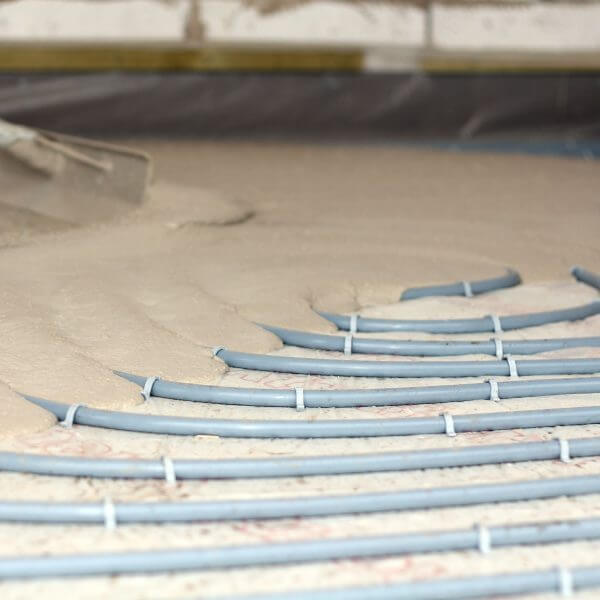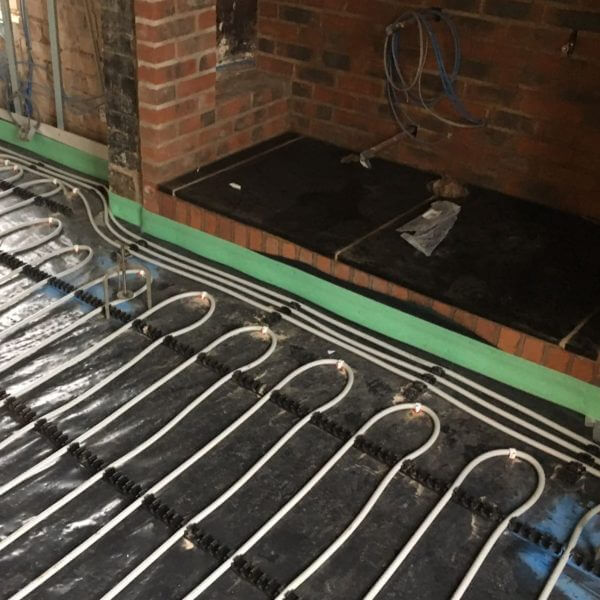Will Underfloor Heating Destroy Laminate? Floor Covering Myths Explained
Laminate flooring is a high-density fibreboard with a photorealistic image on top. It’s a cross between traditional linoleum and engineered wood flooring that is very cost-efficient whilst giving the appearance of a real hardwood floor.
It’s resistant to scratches, incredibly affordable, and can look just like real wood, making it a popular option to install over a cold concrete floor. This is especially so if the solid floor has been surfaced and levelled with a liquid screed covering.
But does it work with underfloor heating? If you’re thinking of hiring an underfloor heating Leicester based engineer to refurbish your floors, does it mean switching to a different floor covering?
Thanks to EasyFlow’s specially designed system, it works with the majority of floor coverings, laminate included. However, there are some ways that laminate flooring can fail. Here are common problems associated with laminate, and what can be done to prevent them.
Laminate Floor & Underfloor Heating Myths
Does Laminate Flooring Work With Wet Underfloor Heating?
Because laminate is made with fibreboard, an organic material, it is vulnerable to water damage. This should not be a problem with proper installation. If you are looking up how to install underfloor heating on concrete flooring, you would know our standard EasyFlow system lays a damp proof screed.
Furthermore, we cover up the water heating pipes with a mix prepared by our liquid screed Cardiff team. If cured properly, this will prevent damp and moisture build-up underneath the laminate boards. To further reduce the risk of moisture, lay a thick underlay with a low tog rating before you install the laminate will help with this.
As you will know from our previous blog, a good underfloor heating engineer will install the system in a way that prevents leaks. Meaning this will not be a risk to your laminate flooring either, unless you manage to puncture the pipe after installation.
Will Laminate Flooring Melt with Underfloor Heating?
You would have to work very deliberately to achieve this. Laminate flooring has a melting point around 82°c, and it may start to warp above 65°c. However, as any underfloor heating engineer will boast, a floor heating setup will operate effectively at 40°c, with little need to increase the boiler flow temperature any higher.
Because it operates so efficiently, you can turn your thermostat as low as 15°c whilst still feeling warm. Very rarely would you have to turn your thermostat above 20°c to efficiently warm a room. Because of these reasons, you would not be able to melt your laminate flooring under normal conditions.
Is Laminate Flooring at Risk of Thermal Shock?
Thermal shock is when a material is subjected to repeated or sudden changes in temperature and is unable to cope. Materials expand when heated and become dense when cold. Laminate flooring is at risk of thermal shock if the boards are installed without any expansion gaps.
Without any room to expand, the boards would buckle or snap when they are warmed up. Therefore, it is best not to DIY your floor covering after you install underfloor heating on the concrete floor. An experienced floor layer should be hired, who can fit the boards using proper calculations for expansion.
What Laminate Does our Underfloor Heating Leicester Team Recommend?
The thicker the board is, the longer it will take to heat up your floor, which can decrease the efficiency of your heating. To ensure efficient heat transfer, we recommend using boards no thicker than 18mm. 12-16mm is often the best compromise between sturdy boards and efficient heating.
You should also avoid very cheap variants of laminate, these boards use lower quality materials that don’t last as long. They are less scratch resistant, have lower melting points, and lose their protective coatings very easily.




Where To Find Us